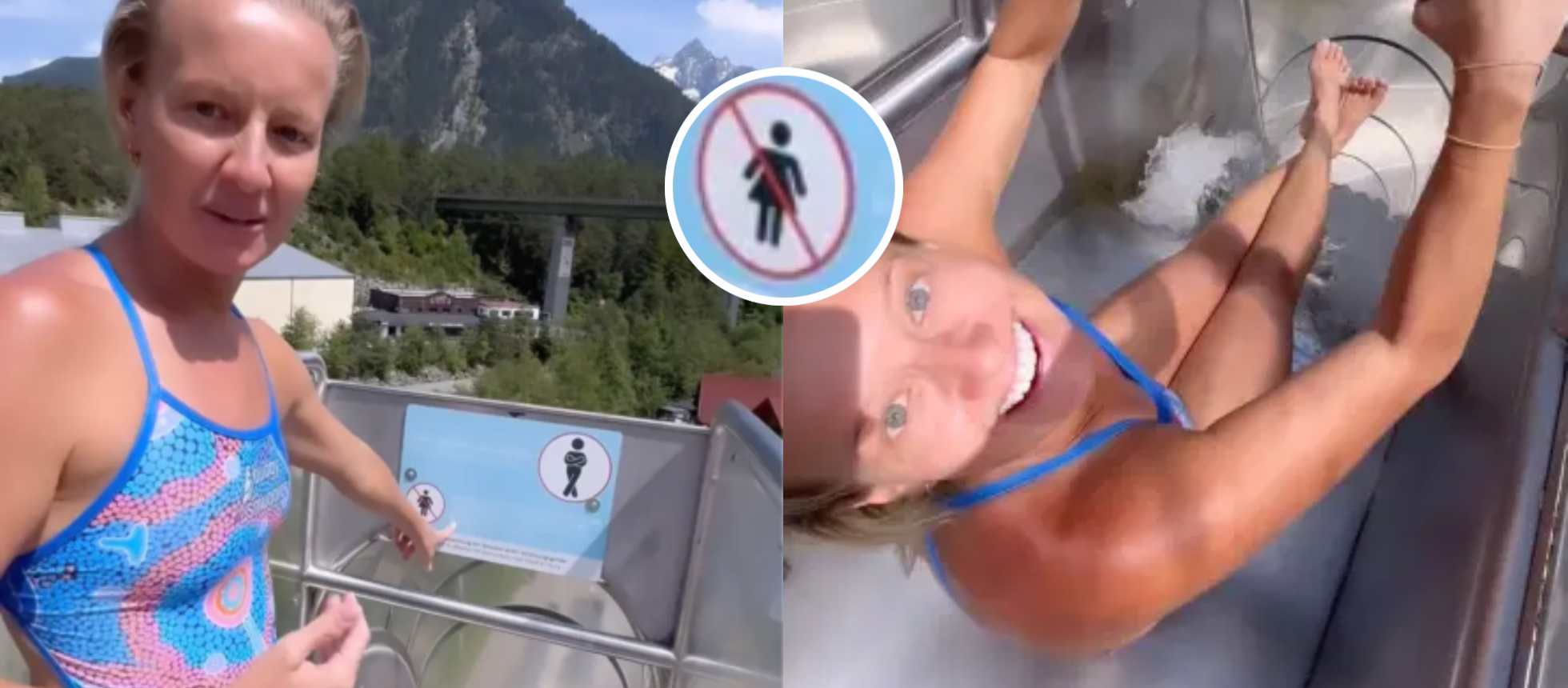When seven-time world champion cliff diver Rhiannan Iffland encountered a bright red warning sign at Austria’s Area 47 adventure park, she made a decision that would spark international debate. The sign featured a crossed-out female figure stating, “Due to high risk of injury, women are not allowed to use this slide!”
Despite the clear prohibition, the 33-year-old Australian diving champion decided to take her chances on Europe’s fastest waterslid. It reaches bone-rattling speeds of up to 80 kilometers per hour. Her Instagram video, showing her plummeting down the silver vertical drop attraction, carried a defiant message: “Apparently women are not supposed to do this slide.”
The footage quickly went viral, but not for the reasons Iffland might have expected. Instead of celebrating her daredevil spirit, viewers flooded the comments with warnings about the serious medical dangers that prompted the ban in the first place.
“The amount of people that don’t understand why women aren’t supposed to go on this slide is scary,” one Instagram user commented. Another questioned: “The sign says ‘due to high risk of injury’. Why would you still go down?”
The restriction isn’t rooted in outdated gender stereotypes, but in a disturbing pattern of severe injuries that have plagued high-speed water attractions worldwide. Medical research has documented how the extreme forces generated by these slides can cause devastating internal damage to women. High-pressure water can enter the body and causing tears, infections, and other serious complications.
The dangers became tragically real for 38-year-old Monu Bhagat, who suffered an 8-centimeter internal tear while using the VertiGo slide at Spain’s Aqualandia water park in Benidorm. Despite following safety instructions to cross her arms and legs, Bhagat experienced what she described as “a tight pull” during her descent.
“As I went down I felt a tight pull and to start with I thought I had a wedgie, but as I got out of the pool blood started pouring down my legs,” Bhagat recalled. “My daughter saw the blood and she was so scared.”
Bhagat spent 24 hours in hospital receiving stitches and an epidural, with doctors expressing surprise at the severity of her injuries. Her case wasn’t isolated, similar incidents have occurred at water parks across Europe. This has prompted facility operators to implement gender-specific restrictions on their most extreme attractions.
Area 47 officials explained that their ban wasn’t implemented arbitrarily. When the park opened in 2009, the slide was available to all visitors regardless of gender. However, a pattern of accidents in the second year forced management to consult with medical professionals and authorities.
“Initially, this particular slide was open to both women and men,” an Area 47 spokesperson explained. “However, in the second year, we noticed a significant increase in accidents on this slide, which required us to take action.”
The consultation process led to what officials described as a “difficult decision”: either dismantle the attraction entirely or restrict its use to men only. The park chose the latter option, prioritizing visitor safety over accessibility.
“Our highest priority is ensuring the safety and happiness of all our guests, regardless of gender,” the spokesperson emphasized. “The risks for women using this slide were tragically highlighted a few years ago when a woman was severely injured on a similar slide in the Canary Islands.”
Following the online backlash to her stunt, Iffland clarified her intentions: “It was never my intent to mock the safety regulations of this water slide. A person’s safety is paramount and I am constantly weighing up any danger with my job. To suggest otherwise, is wrong.”
The medical community has documented these risks extensively. Studies show that high-pressure water entering the female body can cause internal tears, infections from waterborne contaminants, and other serious complications that can have lasting health consequences.


